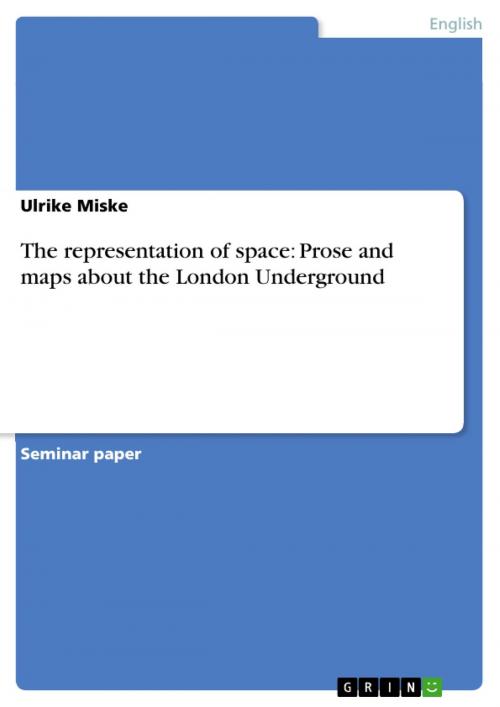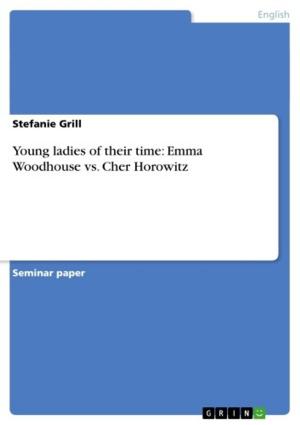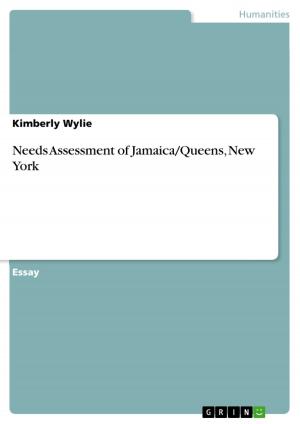The representation of space: Prose and maps about the London Underground
Nonfiction, Reference & Language, Study Aids, ESL, Foreign Languages| Author: | Ulrike Miske | ISBN: | 9783640166381 |
| Publisher: | GRIN Publishing | Publication: | September 15, 2008 |
| Imprint: | GRIN Publishing | Language: | English |
| Author: | Ulrike Miske |
| ISBN: | 9783640166381 |
| Publisher: | GRIN Publishing |
| Publication: | September 15, 2008 |
| Imprint: | GRIN Publishing |
| Language: | English |
Seminar paper from the year 2007 in the subject English Language and Literature Studies - Culture and Applied Geography, grade: 1,7, University of Paderborn, course: Narratives of London, 12 entries in the bibliography, language: English, abstract: Some people say you can only experience London as you walk it. Others say that riding the London Tube gives you the real picture of the city as you receive different perspectives. Indeed, the world's oldest and largest underground, is one of the city's most prominent and prototypical features. For more than 140 years, a diverse range of people such as tourists, visitors, provincials and commuters have travelled the metropolis by underground. Yet all of them for the same reason: to get from one place to the other. From the opening of the first line in 1868, the London Underground also attracted the attention of many writers who depicted this means of transportation in their works. In fact, the London Underground still fascinates many contemporary authors such as Doris Lessing and Charlie Higson. Reading Lessing's In Defence of the Underground or Higson's The Red Line you are taken along on a journey below the city, exploring the metropolis. While the story's characters travel through London they organize space. When riding one of the underground lines, certain places and linked together. As the story continues, the narrative structures unfold to be spatial syntaxes that take the reader along on a tour through the metropolis. In this paper I will argue to what degree texts about the London Tube as well as the London Underground maps can be considered a way of organizing the space of London. First of all, I want to give a short introduction on spatial theory and a definition of the concept of spatial stories. Afterwards, I will apply my findings on spatial stories to the London Underground texts In Defence of the Underground and The Red Line. Moreover, I will discuss the different representation of London within the two texts. Finally, I want to examine to what degree London Underground maps can be considered a way of organizing the space of the city. [...]
Seminar paper from the year 2007 in the subject English Language and Literature Studies - Culture and Applied Geography, grade: 1,7, University of Paderborn, course: Narratives of London, 12 entries in the bibliography, language: English, abstract: Some people say you can only experience London as you walk it. Others say that riding the London Tube gives you the real picture of the city as you receive different perspectives. Indeed, the world's oldest and largest underground, is one of the city's most prominent and prototypical features. For more than 140 years, a diverse range of people such as tourists, visitors, provincials and commuters have travelled the metropolis by underground. Yet all of them for the same reason: to get from one place to the other. From the opening of the first line in 1868, the London Underground also attracted the attention of many writers who depicted this means of transportation in their works. In fact, the London Underground still fascinates many contemporary authors such as Doris Lessing and Charlie Higson. Reading Lessing's In Defence of the Underground or Higson's The Red Line you are taken along on a journey below the city, exploring the metropolis. While the story's characters travel through London they organize space. When riding one of the underground lines, certain places and linked together. As the story continues, the narrative structures unfold to be spatial syntaxes that take the reader along on a tour through the metropolis. In this paper I will argue to what degree texts about the London Tube as well as the London Underground maps can be considered a way of organizing the space of London. First of all, I want to give a short introduction on spatial theory and a definition of the concept of spatial stories. Afterwards, I will apply my findings on spatial stories to the London Underground texts In Defence of the Underground and The Red Line. Moreover, I will discuss the different representation of London within the two texts. Finally, I want to examine to what degree London Underground maps can be considered a way of organizing the space of the city. [...]















